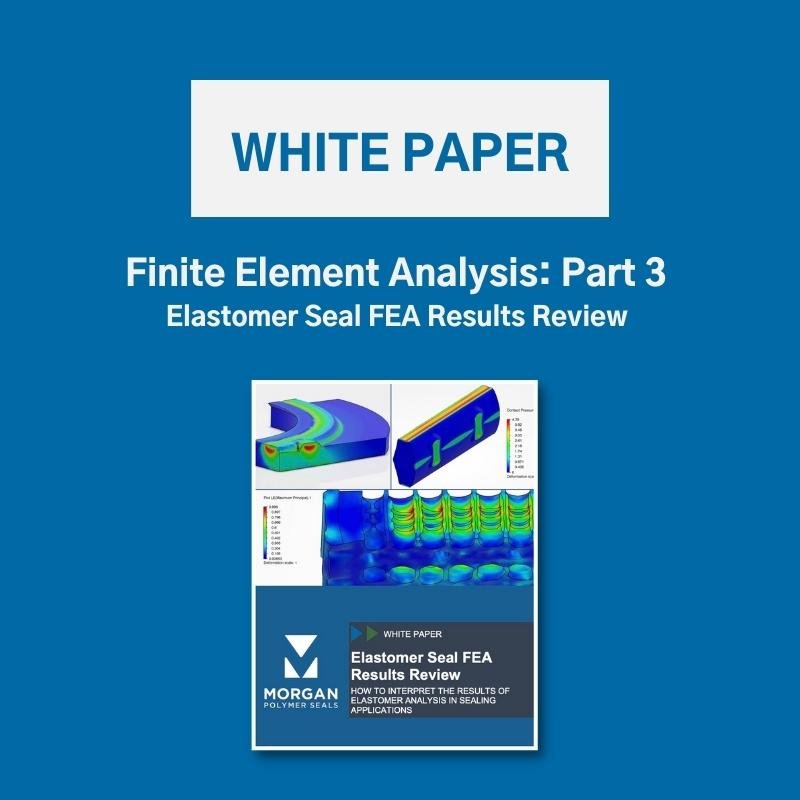FEA White Paper, Part 3: Reviewing Results
Part 3 of our FEA white paper focuses on interpreting the results of Finite Element Analysis for elastomer seals.
Here’s a summary of what you’ll find in this white paper:
Results of Least Material Condition (LMC) Analysis:
Contact Pressure Profiles: For seals like press-in-place (PIP), face, and carrier seals, the contact pressure at mating surfaces is crucial. Different seal designs have different contact pressure profiles.
Assembly Offset: When analyzing seals with potential misalignments, such as shifted assembly conditions, the analysis looks at both pressure profiles and the overall seal shape to ensure proper performance.
Pressurized Systems: For seals in pressurized environments, the analysis evaluates whether friction is enough to hold the seal in place, ensuring internal pressure retention.
Results of Maximum Material Condition (MMC) Analysis:
Peak Stresses and Strains: MMC analysis focuses on areas of high deformation. It allows for more lenient meshing compared to LMC but requires careful monitoring of stress concentrations, especially in PIP gaskets where volumetric compression is significant.
High Deformation: Carrier and face seals behave differently in terms of stress distribution, with face seals typically experiencing more stress at the edges.
Application Temperature:
Thermal analysis is essential for seals operating at high temperatures, which can cause thermal expansion in both elastomers and composite parts. The results must account for changes in volume and compression due to heat.
Load/Deflection Curves:
These curves are useful for predicting the deflection caused by assembly forces and environmental conditions over time, particularly in large seals. Adjusting seal height or design can significantly impact the load profile and assembly performance.
Insertion and Retention Forces:
For seals that require manual insertion, FEA can estimate the required insertion forces, which are important for ensuring assembly feasibility. Similarly, retention features (such as posts or continuous features) help hold seals in place during assembly. The design of these features must balance the force needed for insertion and retention.
Understanding FEA results allows for confident design decisions and reduces the need for additional physical testing. The results should be periodically compared with real-world tests to ensure accuracy.
Click the button below to download the entire white paper for “FEA Results” and click the other links below to download the other two parts in the series.
To read the other parts of this series, check out these links:
FEA White Paper Part 1 -material properties
FEA White Paper Part 2 - setup


